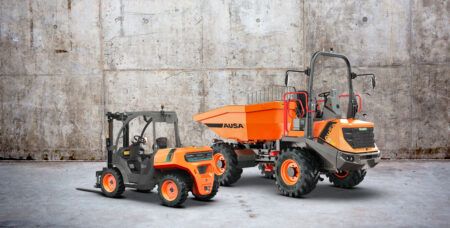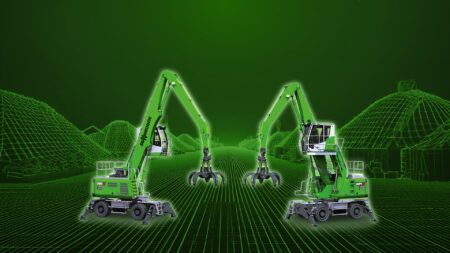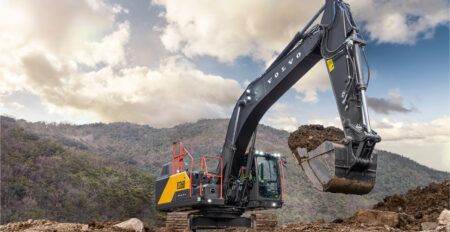JCB is expanding its range of compact excavators, with the launch of two 2.5-tonne platform machines. The 25Z-1 is a zero tailswing model that replaces the previous 8025 ZTS, while the 26C-1 is a conventional counterweight replacement for the 8026 CTS.
The 25Z-1 tips the scales at 2,550kg, while the 26C-1 weighs in at 2,675kg. With an overall width of just 1,500mm, either machine can be towed behind a van or a 4×4 on a 3.5-tonne trailer, making it easy to move the excavators between job sites. They are equipped with nine tie-down points, for secure transportation without chains or straps cutting into rubber tracks.
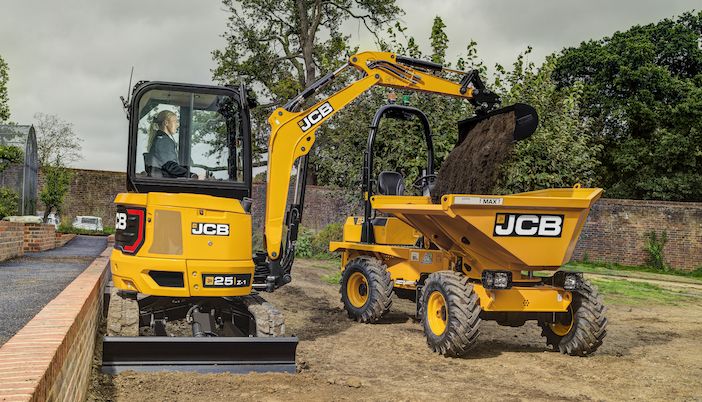
The mini excavators share the design and styling of JCB’s larger 3.5-tonne Next Generation models, with sturdy pressed steel bodywork and a cast counterweight ensuring maximum durability and service life. The two machines have the same cab structure, which benefits from flat glass and steel panels, while the door locks back within the profile of the counterweight, to prevent any risk of damage when rotating.
Key features include:
- Zero tailswing and conventional counterweight models
- EU Stage V and Tier 4 Final engines available to suit global markets
- Redesigned cab delivers class-leading operator comfort
- Improved dig-end geometry with 500-hour greasing intervals
- Electro-proportional auxiliary, swing and dozer controls
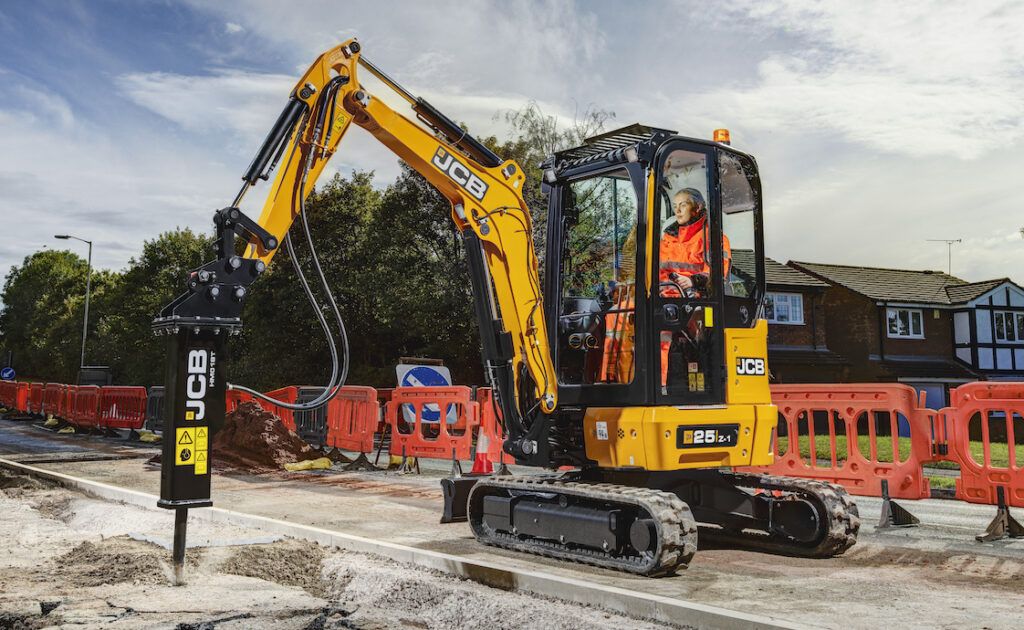
There is a spacious ROPS/TOPS cab, with a heater or optional air conditioning, while a canopy is available if preferred. An optional Level 1 Operator Protection Guard is offered and the minis are equipped with ‘follow-me home’ work lights, that remain illuminated, to allow the operator to move away in the hours of darkness. The front screen has a 66/34 split line, providing an optimal view into the trench and slim rear cab pillars improve rearward visibility.
The upper screen section can be stored in the roof of the cab, while the lower screen can also be removed and stowed above the operator’s head, as part of the upper screen cassette. A bolt-on grab handle on the front A-pillar can easily be replaced if damaged and a removable floor mat, with no steps or logos, makes it easier to keep the cab floor clean.
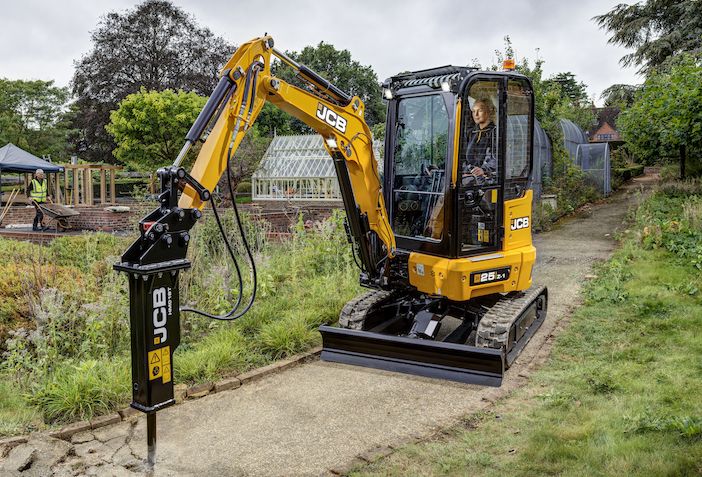
The machines benefit from an improved Next Generation operator environment, with a premium suspension seat, an ergonomic membrane switch layout, a 4in digital multi-function screen and a rotary controller. The screen displays engine rpm, coolant temperature and fuel gauge on the left-hand side at all times, while additional information can be customised by the operator to the right of the screen.
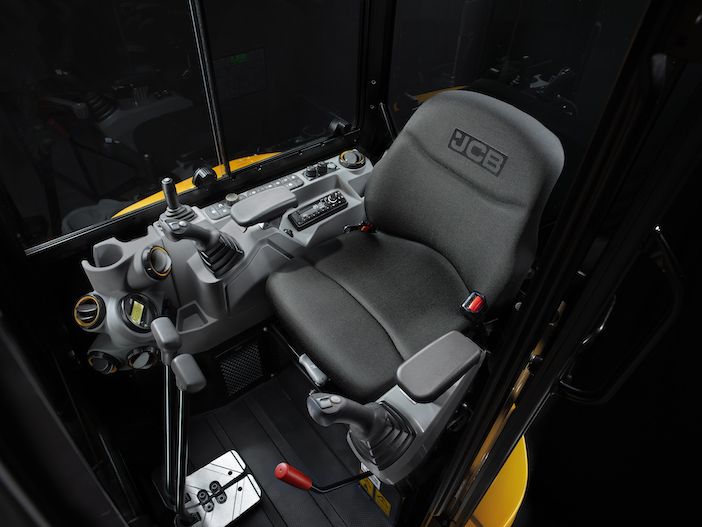
The screen contents are controlled by the rotary dial and can be set to display engine/service hours, auxiliary flow status, lift overload status, hydraulic oil temperature and pressure. The operator can use the various menus within the screen to adjust auxiliary flows, windscreen wiper frequency and auto-idle activation times. Service engineers can also access diagnostic information through the monitor. The machines carry out an automatic health check at first key-on each day.
Global driveline
The two mini excavators are supplied with an EU Stage V/ Tier 4 Final compliant Kohler diesel engine, that develops 18.4kW (24.7hp). The engine meets both emissions protocols without the need for a diesel particulate filter (DPF) or any form of exhaust after-treatment. A fan guard is standard and there is easy ground level access to all fill points and filters.
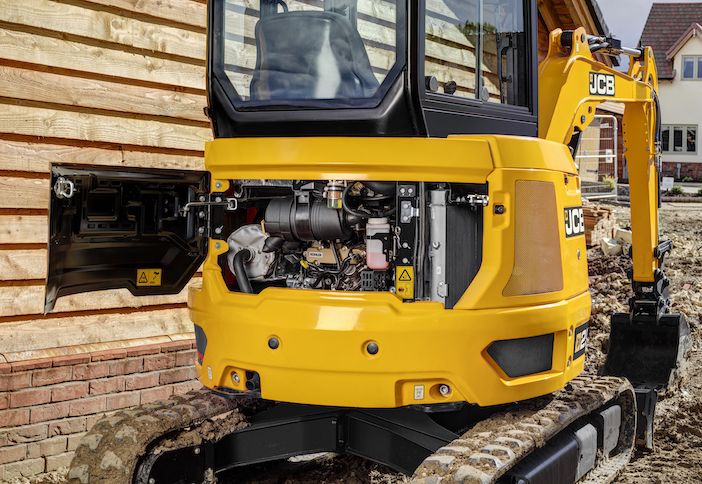
A new type of variable displacement, load-sensing, electro proportional hydraulic pump, allows every bit of engine power to be used by the machine’s hydraulic system, without the engine lugging down or stalling. A new main valve block delivers improved efficiency flow sharing, allowing smoother, multi-function use, while auto kick-down track motors adapt to changing terrain to maintain momentum across site.
The main valve block is easy to access, beneath a removable floor plate, which also provides access to the slew motor, rotary joint and other hydraulic valves. All hydraulic hoses are colour coded for easy identification in the event of accidental damage.
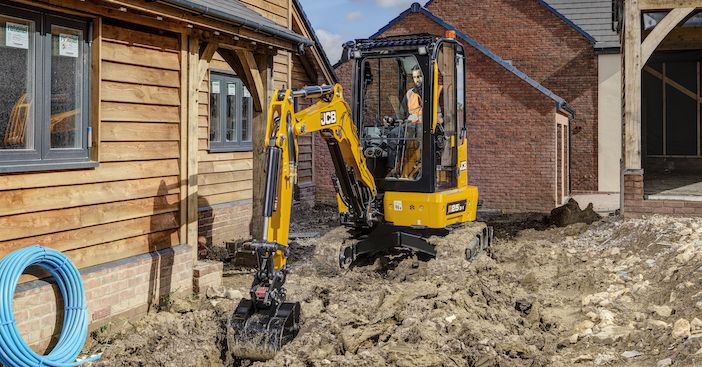
A high-flow, double-acting auxiliary circuit is standard, delivering 48 litres/min to power a wide range of attachments. This is controlled by an electro-hydraulic thumb roller on the right-hand joystick. A single to double acting changeover valve is electronically controlled by a switch in the cab.
A double-acting low-flow circuit is offered as an option, providing 25 litres/min. This is controlled by a thumb roller on the left-hand joystick. The operator can select high and low flow modes using 0-100% of the available hydraulic flow and auxiliary relief pressure can be manually adjusted on those machines equipped with both high and low-flow circuits.
Despite their compact dimensions, the 25Z-1 has an impressive maximum digging depth of 2,824mm, while the conventional tailswing 26C-1 offers up to 3,037mm of excavating capability.
Safe operation
Both mini excavators feature additional safety features, such as JCB’s unique 2GO hydraulic isolation system, that requires the operator to press a secondary switch before the controls become active. All hydraulic services are disabled when the left-hand servo pod is raised, removing the risk of unplanned movement of the machine. JCB mini excavators are equipped with an immobiliser, with the option of a key or a keypad activation, with the possibility of up to 14 codes, for multiple users and rental companies.

The JCB LiveLink telematic monitoring system is offered as an option, providing machine location, health and operating data remotely. The system allows customers to better plan preventative maintenance and regular service work.
The 25Z-1 and 26C-1 carry over the same bucket pin dimensions, allowing customers to continue to use existing buckets and attachments. JCB now offers a factory-fit hydraulic quick hitch option, which incorporates two locking mechanisms with an LED boom light indicator. Designed to meet all current and future legislation, the hitch is fully UKCA/CE marked and approved.
Other options include a new mechanical hitch, a factory-fit hydraulic thumb, that can be used with high or low-flow hydraulics, and a new lightweight range of buckets that use current pick-up dimensions.



